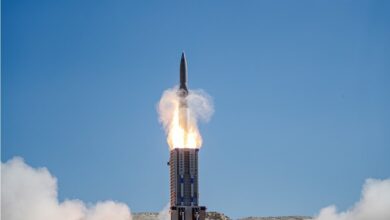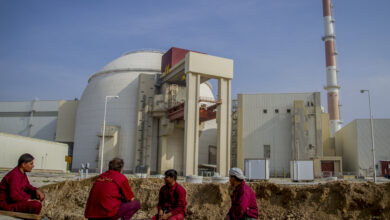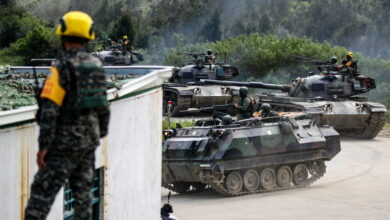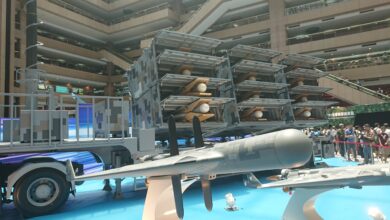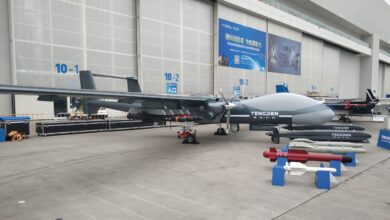China Practices Striking US Carriers With Hypersonic Missiles: Report
China has created a string of facilities to practice naval ship targeting with long-range ballistic missiles in Xinxiang’s Taklamakan Desert, USNI News revealed, citing satellite images.
One of the facilities in the Ruoqiang region in Central China was first captured by satellite in November, showing targets in the shape of a US aircraft carrier and at least two Arleigh Burke-class destroyers.
A missile struck one of the targets at the facility in February. The model has now been disassembled and taken away, the outlet revealed.
New facilities have been detected along the eastern edge of the desert, some with ship-like models moored in ports, USNI News wrote.
Hypersonic Anti-Ship Ballistic Missiles
After analyzing the site’s location and nature and particularly the holes on the ship’s bodies, the outlet observed the use of hypersonic anti-ship ballistic missiles (ASBMs).
According to the outlet, China has been developing a range of ASBMs such as the land-based DF-21D and DF-26 and a smaller, provisionally named YJ-21 launched from the Type-055 Renhai Class cruiser.
A yet unknown ASBM has also been reported that can be launched from the H-6 bomber.
More Sophisticated Than Previous Versions
Citing independent defense analyst Damien Symons, the outlet wrote that the new facilities are more sophisticated than their predecessors.
“The layout of the targets is very calculated,” he said. “The orientations, shapes and sizes are consistent across multiple targets. There is nothing haphazard about these sites.”
Symons said the “targets appear to have been shaped by laying metal sheets on the ground.”
He said the metal is different from the piers and buildings at the facility and “may reflect heat or radar differently, this also might give us an indication of the complex systems and effort behind these experiments.”
The outlet also observed that the testing missiles might have used AI-based infrared and radar to strike the ship accurately, distinguishing it from a pier.



